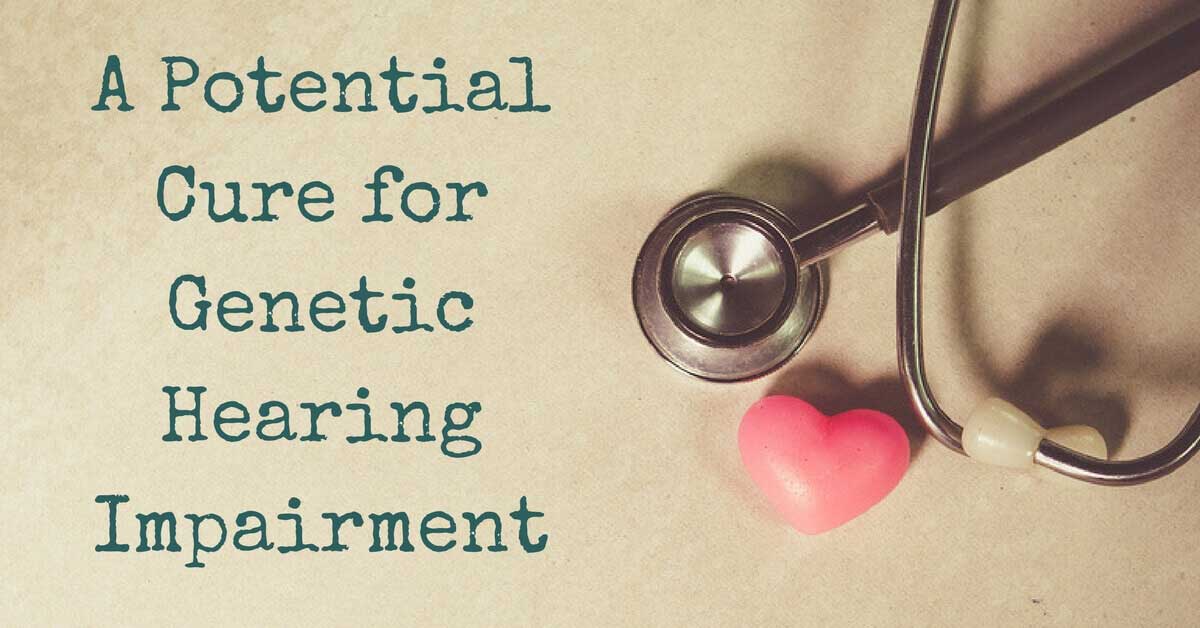All About Bluetooth Hearing Aids
Do you remember the hearing aids your parents or grandparents used to

By: admin | June 12, 2017
Hearing loss in infants can greatly affect how a child learns language and interacts with the world around them. Particularly when the hearing loss is profound, it becomes much more difficult for a child to learn vocabulary, grammar, word order, idiomatic expressions, and other aspects of verbal communication. Early diagnosis–along with treatment such as hearing aids or cochlear implants–can make life much easier for hard of hearing children and their parents. Though there is not a cure as of yet, a promising development in gene therapy is offering hope for the future.
Genetic factors are thought to cause about 60 percent of cases of hearing loss that is congenital (present at birth), and there are about 100 different types of genetic defects that can cause hearing loss. Over 5 percent of the world’s population has profound hearing loss, and many of these cases are due to genetic factors.
Autosomal dominant hearing loss – In this type of hearing loss, one parent who carries the dominant gene for hearing loss and commonly has a hearing loss passes it on to the child. In these cases, there is at least a 50 percent chance that the child will also have a hearing loss, and there is usually a prior expectation that the child may also have one.
Autosomal recessive hearing loss – In these cases, both parents usually have normal hearing, though they carry a recessive gene; the probability of the child having a hearing loss is 25%. Because both parents usually have normal hearing, and because no other family members have hearing loss, there is often no prior expectation that the child may have a hearing loss.
X-linked hearing loss – Sometimes, the mother carries the recessive trait for hearing loss on the sex chromosome. In these cases, the hearing loss can be passed on to males, but not to females.
Genetic syndromes – Some genetic conditions carry a risk of hearing loss as one of their characteristics. A few examples are Down syndrome, Usher syndrome, Treacher Collins syndrome, Crouzon syndrome, and Alport syndrome.
Scientists at the Boston Children’s Hospital, Massachusetts Eye and Ear and Harvard Medical School have been working for the past several years on a technique of repairing genetic deafness through gene therapy. The technique, carried out on mice, has proved successful, and researchers hope that the human application will not follow far behind.
The specific disorder they were able to repair is known as Usher Syndrome. This condition is the leading genetic cause of combined hearing and vision loss, and results from an abnormality in a gene called ush1c, which is responsible for creating proteins in the inner-ear hair cells. These hair cells play a crucial role in hearing, by converting sound vibrations into electrical signals to be interpreted by the brain. In those with Usher Syndrome, the conversion from vibration to electrical signal does not take place, resulting in profound deafness, loss of balance and even blindness.
The researchers set out to determine if repairing the abnormal gene could reverse the damage of Usher syndrome, if treated early enough. The pioneering method they used is called adeno-associated viral vector, in which a benign virus delivers new genetic material. A mouse’s damaged DNA was replaced with a healthy ushc1 gene from another mouse, and the altered virus was then multiplied and injected into the inner ears of deaf mice with Usher Syndrome. The results were remarkable.
After six weeks, the mice exhibited near perfect hearing, as well as full recovery of sensory hair growth, brain auditory function, balance and sound sensitivity–they were even able to hear a whisper.
Dr. Jeffrey Holt, of Harvard Medical School in Boston, said: “This is a landmark study. Here we show, for the first time, that by delivering the correct gene sequence to a large number of sensory cells in the ear, we can restore both hearing and balance to near-normal levels.”
The findings of the study were published last February in two separate papers in Nature Biotechnology. Following the publication, the Boston team started preparing for human trials, and in March they exposed human outer-ear hair cells to the same ush1c-carrying virus. The results of this trial were promising as well–after only 10 days, the virus had reached about 83 percent of the targeted cells. Although tests of cell function were not carried out, the team was encouraged by the virus’ ability to reach so many hair cells, and they are optimistic about the potential of this technique to treat not only Usher syndrome, but other genetic hearing disorders as well.
In the meantime, the best solution to hearing loss is to have your hearing tested and be fitted for hearing aids. Contact us at Orange County Physicians’ Hearing Services today to schedule a consultation.

Do you remember the hearing aids your parents or grandparents used to
By: admin | August 7, 2022

Do you ever find yourself at the end of a long day only to be confronted
By: admin | August 7, 2022

How Common is Hearing Loss Many people might be shocked to learn how
By: admin | June 22, 2022
